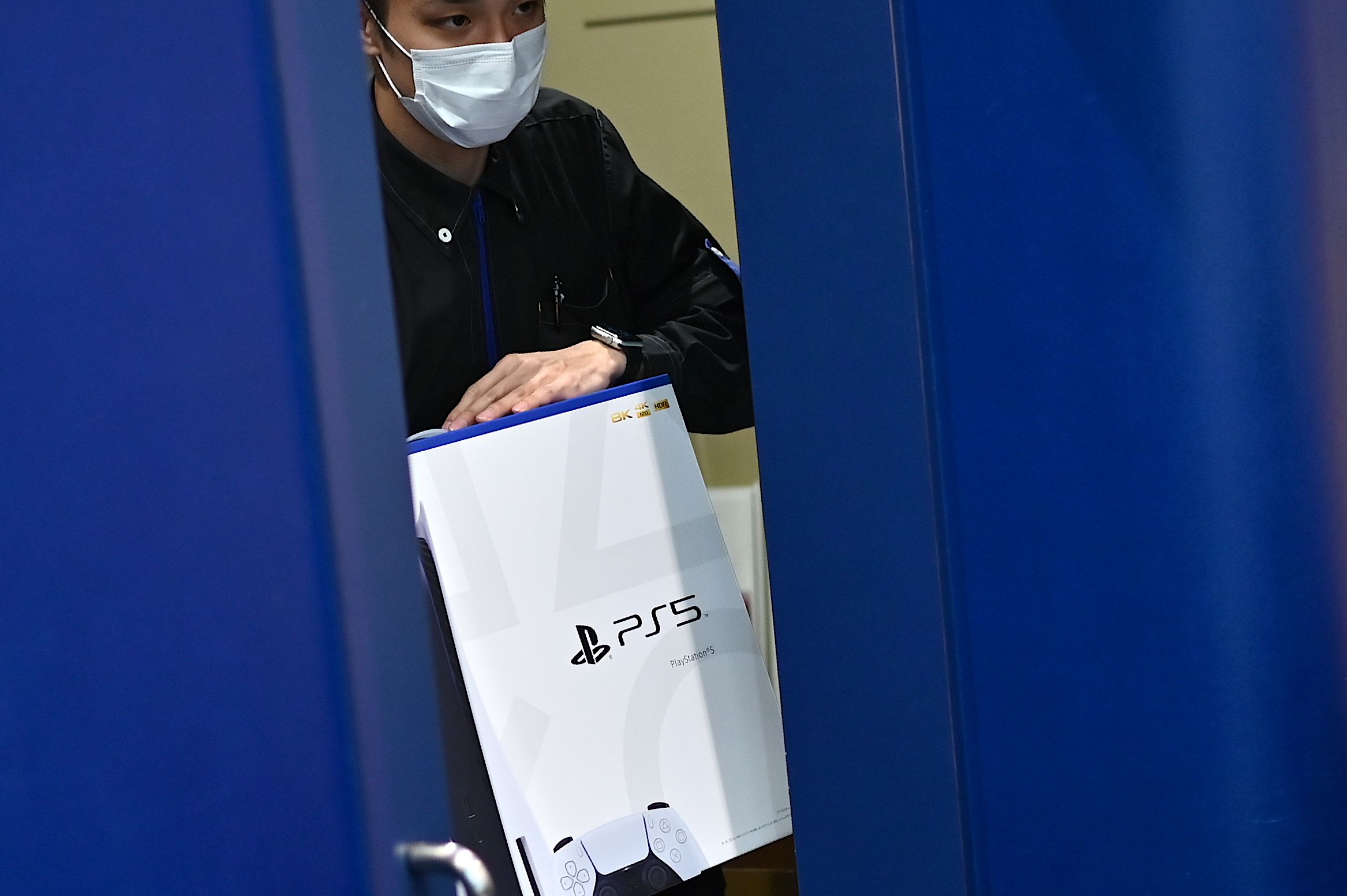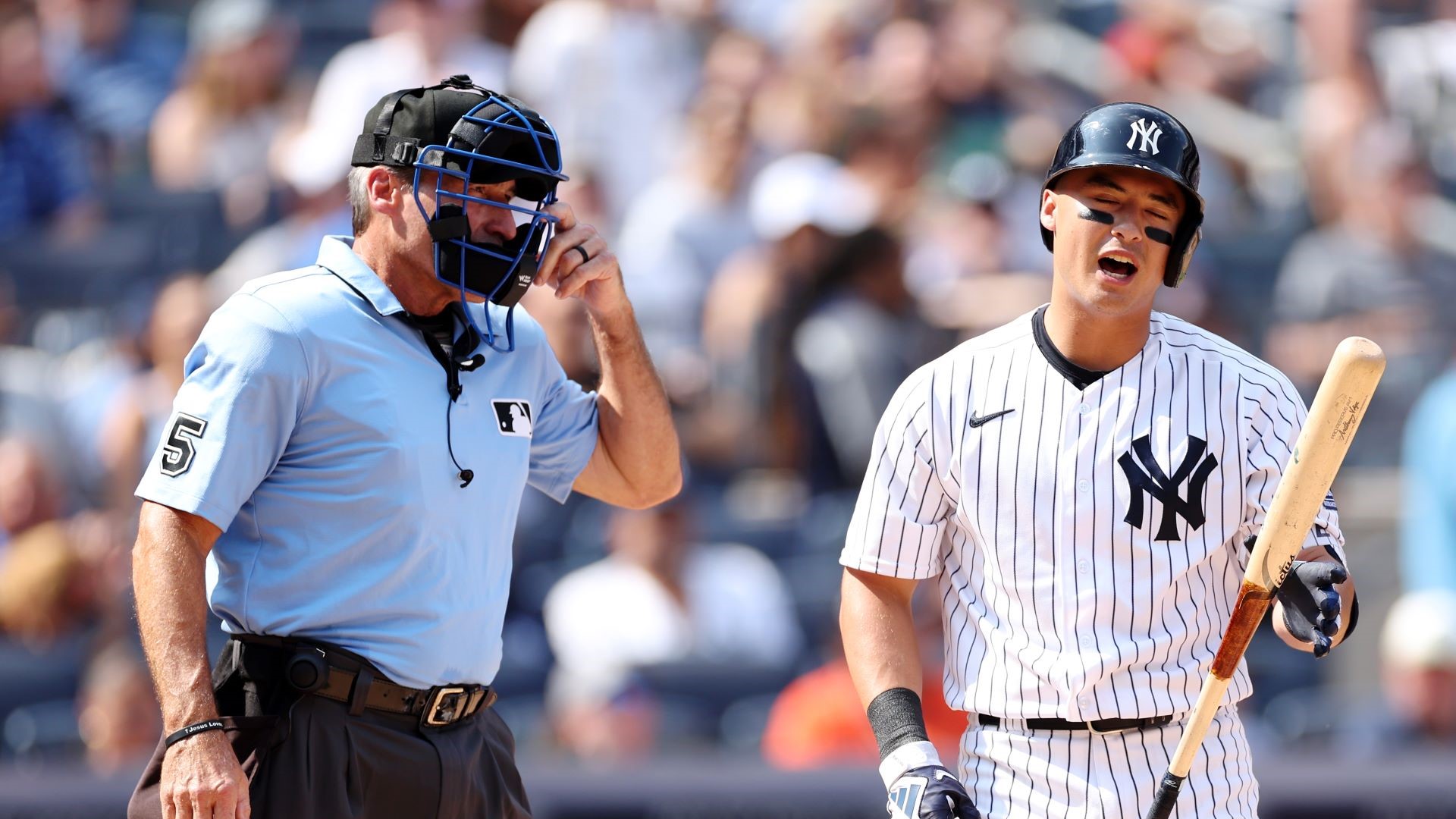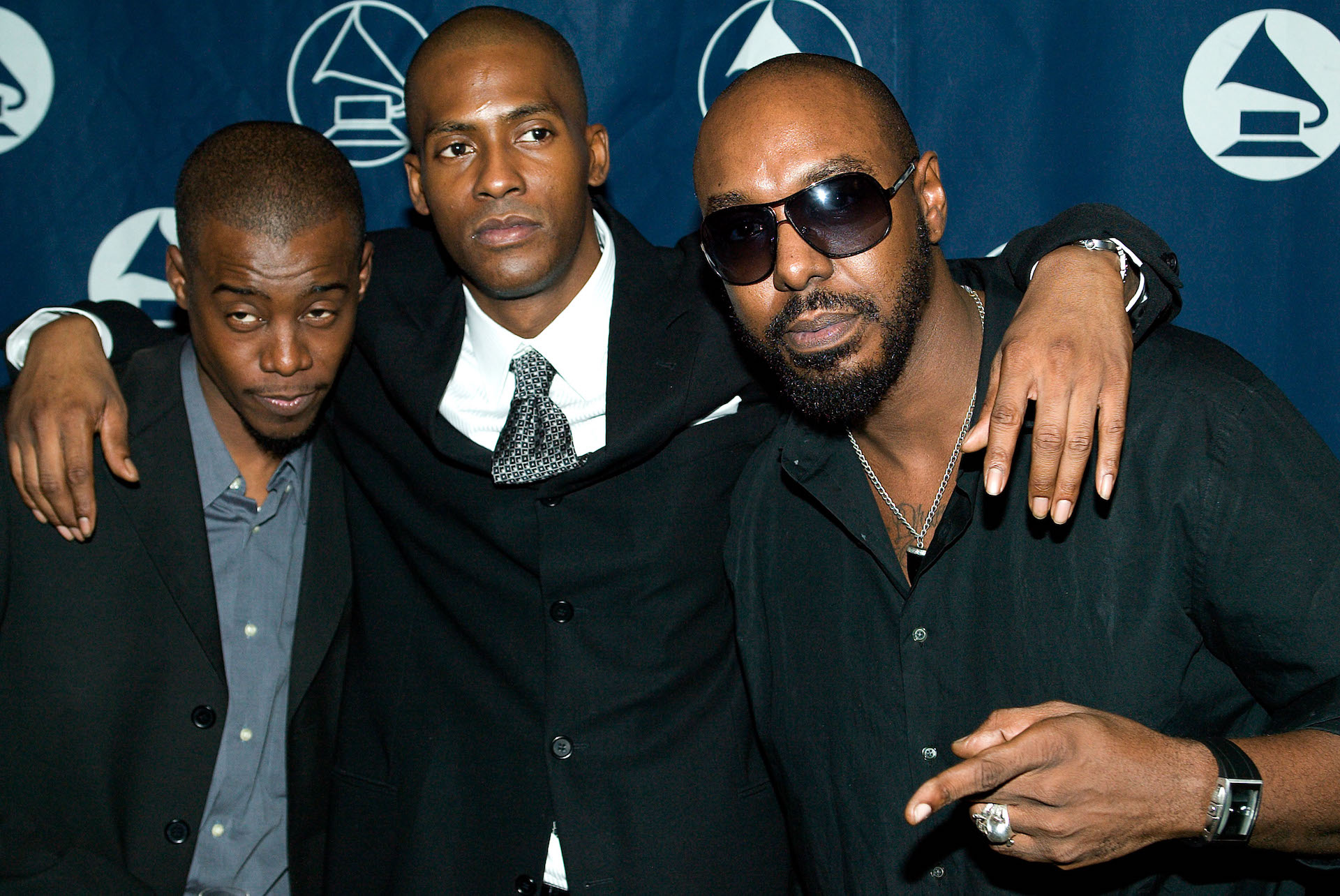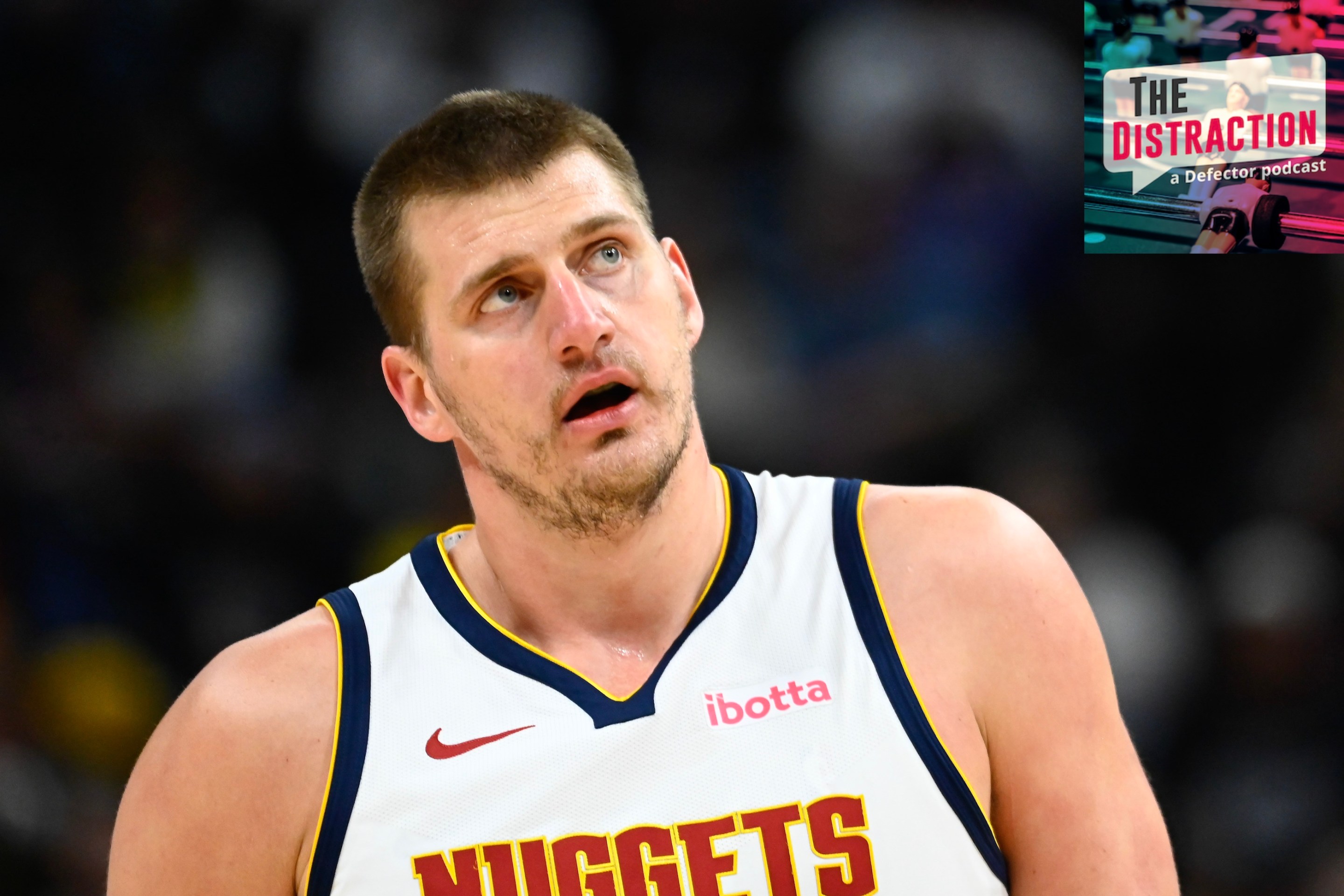Gaming’s All-Digital-Everything Future Threatens To Erase The Past
3:57 PM EDT on May 13, 2021

Charly Triballeau/AFP via Getty Images
When the clock struck midnight and March 31, 2021 became April 1, Mario died. At least, that was the joke. The inspiration for all those memes of Mario walking into the light was Nintendo’s removal of multiple Mario games from the digital marketplace on their video game console, the Switch. One of those, Super Mario 3D All-Stars, a compilation of three previous Mario titles otherwise unavailable on the Switch, can still be downloaded—for now, if you have already paid for a digital version. The other, Super Mario Bros. 35, is gone from the shop, and no longer playable.
Those two, plus a 30th anniversary release—and the first-ever English localization of the original version of the game—of Fire Emblem: Shadow Dragon and the Blade of Light, are examples of Nintendo’s recent dabbling in the burgeoning field of digital scarcity. There is no reason why these Nintendo properties, each celebrating three decades of popularity, couldn’t stick around. Nintendo fully owns the characters, the franchises, and the developers who created them, and so can do whatever it wants with them. But Nintendo also has investors, and those investors have expectations, and those expectations are more likely to be met when Nintendo can drum up some kind of boost to sales. And what better way to goose sales than by creating scarcity where there isn’t any? Release schedules are relatively empty and development projects have been slowed by the global pandemic, and there is only so much that can be done about that. But also: What better time to act as if digital goods are in limited supply?
Nintendo’s announcement that they would be delisting these games from their eShop—announcements made before the games were even available for purchase—rightfully annoyed some fans, and enraged others. That this cynical gambit has now mostly just resolved to jokes about Mario’s time of death owes in no small part to Sony deciding to be a pal and do something even worse. It was leaked, and then recently confirmed by Sony itself, that the makers of the Playstation would be getting rid of their digital storefronts for the Playstation 3, Playstation Portable, and the Vita. While Sony has since walked back the closing of the PS3 and Vita stores due to public backlash, it’s only a matter of time before their original plan goes through. That same backlash isn’t stopping the PSP store from closing, for one thing. There is still every reason to believe that, at some point, Sony will rid themselves of all three shops, as they originally intended to.
Sony quite clearly got this idea from Nintendo, which shut down its shop on a previous console, the Wii, in 2017. As with Super Mario 3D All-Stars on the Switch, you can still re-download the games you previously purchased on the Wii Shop, but even that is temporary. Nintendo’s own website says that this feature is “for the time being,” and that you should be “aware that these features will eventually end at a future date.”
Which is to say, if your Wii bricks and Nintendo is no longer providing access to the system’s shop, all of those digital purchases you made, whether it was $50 or $500 or $5,000 of them, are gone. And Nintendo can do that without recourse, because technically, you don’t own any of them: This was all just a long-term rental, just as Amazon says you don’t actually own anything you buy from them digitally. At least with physical copies of games, if your console dies, you can try to find another console on the secondhand market and just play those games in that new console. Digital purchases, ironically enough, have a much more urgent real-world shelf life.
What Nintendo is doing is gross; what Sony is doing is egregious. Fundamentally, though, it is all the same hustle. It’s an industry steering towards an all-digital-everything future, and it sucks.
There’s something uniquely offensive about the fact that you can no longer buy games on the Wii Shop, considering that it was the home of the original Virtual Console, an almost unimaginably sprawling bazaar that brought together retro games from consoles beyond those of Nintendo’s past. The Virtual Console is where I and plenty of other people first found out how wonderful Hudson’s Turbografx-16 was, and where Sega Genesis classics that Nintendo kids had missed out on could be purchased for under $10; it was the only place that anyone besides that one rich kid from your middle school could play Neo-Geo games at home. All of this (lucrative) heritage, quite abruptly, just disappeared.
More vexing was the fact that this was also true for any game that was exclusive to that storefront. Nintendo gave these the goofy name of “WiiWare,” but there were some legitimately great games released on the service. In many ways the storefront presaged the access to inexpensive, risk-taking, independent titles that people enjoy today on other platforms. Now, though, these WiiWare finds are just cool games that have no physical copies—and no digital ones, either, besides those already safely sitting on a console. Safely, anyway, until Nintendo completely shuts down support of the Shop. At that point, it will be like those games never existed.
A similar fate is eventually in store for Sony’s trio of digital shops, but on a larger scale. According to research from Video Games Chronicle, Sony inevitably shutting down those stores will make more than 2,000 games vanish. That includes over 600 digital-only Vita titles, more than 700 PS3 games, nearly 300 Playstation “Minis,” which was Sony’s equivalent of WiiWare, 336 games for Playstation 2, and 260 original Playstation games. Sony already pulled PS2 backwards-compatibility out of the PS3 shortly after its initial launch, ostensibly for cost-cutting reasons. When they once again feel it’s safe to do so, Sony will get rid of the digital versions of the very games they pushed people toward. The speed with which it will all happen is unclear, but the broader trend is plain to see—these games are going away, very much by choice.
VGC admits that those figures are just estimates. The reality might be even worse. Because Sony has already gotten rid of the online versions of the storefronts that they likely still plan to shutter, it has been difficult to track the exact figures down. You can no longer even look up on the web version of the Playstation Network store what games are available on the PS3, PSP, or Vita: You have to go to the console versions of the storefronts themselves, and this is still the case after the PS3 and Vita’s stay of execution. That is especially burdensome for PSP owners who might want to get a last run through the shop, given that they now can’t access it on their system unless they have some ancient mid-2000s wifi-security options lying around. If they don’t also have a PS3, which allows purchases of PSP games that can then be transferred to the handheld through a USB cable, they are shit out of luck.
As with Nintendo and the Wii Shop, Sony will allow you to continue to download games you have already purchased. But, as with Nintendo, this is very explicitly just a temporary measure, and Sony reserves the right to yank that rug out from under you, too, whenever it suits them. This is all especially aggravating because Sony has seemingly rediscovered the wonders of backwards compatibility with the recently launched Playstation 5, which can play Playstation 4 games; there is even a system in place for upgrading some recent PS4 purchases into the inevitable PS5 release of those same games. It’s probably good that they’ve done this since, shortly after the news that an entire generation and then some of games were being vanished, it was revealed that the PS4—yours, mine, everyone’s—is also going to die, and not of natural causes.
In short, the PS4 has an internal clock that cannot be changed, the purpose of which is supposedly keeping people from augmenting their Trophy data. When the battery powering that clock dies—and it will—your console will be completely useless if it can no longer connect to the Playstation Network. You won’t be able to play digital games, and you also won’t be able to play physical games that you, without technicality, actually own. Your system will be useless, in short, unless you need a very large and oddly designed doorstop. Your games also won’t have much resale value, given that no one else will be able to connect their PS4, either.
As TechRadar stated in their report, Sony does not seem interested in creating a patch to work around this eventuality. They really are willing to kill your console in the future to keep some goons from fibbing about the fake gold stars they earned playing video games. The argument here is to rush out and buy a PS5 to solve this issue, because maybe it won’t have the same system-destroying design as its predecessor, and in the hope that maybe Sony won’t needlessly destroy that digital landscape, too. It is very obviously a sucker’s bet: The PS5 allegedly has the same battery issue as the PS4, and the PS3’s version of this problem impacts digital purchases. More to the point, though, anyone buying anything from Sony at this point knows exactly who and what they’re dealing with.
Nintendo, for its part, seems to care more about their old properties—or, probably more accurately, about the money to be made off of them. They had three versions of the Virtual Console between the Wii, Wii U, and handheld 3DS, and made sure that the digital storefront for the previous generations of handheld consoles was available within the 3DS’ eShop, too. They also released two pretty good “mini” systems full of old NES and SNES games, though they absolutely and obviously played with scarcity there in order to boost demand and sales. The NES Classic received two releases, one in 2016 and another in 2018. The SNES Classic got just one. You may not be surprised to learn that secondhand markets like eBay are now full of cheap knockoffs sold at premium prices, all capitalizing on the gap Nintendo left in the market with their decision to create scarcity.
You can and should complain about Nintendo’s minis and their scarcity issue, but again, Sony seems determined to make Nintendo hold their beers. Sony’s Playstation Classic is, in both my professional and amateur opinion, a complete piece of shit. The game selection is thin and often confounding, the options within the mini are lacking, the price frankly ridiculous when compared to even the modest products Nintendo put out. Purchasing it at full price only looks worse now, when anyone could readily grab one for about 70 to 80 percent off its initial MSRP because of how poorly received it was. The minis that have been released since make the Playstation Classic look even worse. The Turbografx-16 Mini has over 40 North American and Japanese games, many of them rarities; the Genesis Mini offers a killer library neither the SNES or NES Classics approached in depth; the Neo-Geo Arcade Stick Pro not only has classic SNK games, but doubles as a controller that can be used on the PS3, PS4, and the Switch.
Maybe it’s notable that none of those companies even have consoles anymore, which meant that getting the mini right mattered both for reasons of legacy and finances. The Playstation Classic, on the other hand, is emblematic of Sony’s attitude towards their vast and deep history: They treat it like something they hate, because it is not as profitable as their present moneymakers. They handle it in a way that suggests they want you to hate it, too. This is why they are cutting users off from an entire generation of games, or forcing them to go buy Microsoft’s consoles in order to access some still-existing digital version of them. Their focus is on a subscription service, but more strictly on whatever is new new new. The Classic is not about anything Sony cares about.
If Sony’s mini looks like an overt cash grab from a disinterested party, it’s because that’s exactly what it was. Jim Ryan, President and CEO of Sony Interactive Entertainment, is living proof of that. Back in 2017, Ryan, who again, is now the head of the entire video game division of one of the world’s largest companies, told Time, “I was at a Gran Turismo event recently where they had PS1, PS2, PS3 and PS4 games, and the PS1 and the PS2 games. They looked ancient, like why would anybody play this?”
I write a newsletter about retro video games, so I’m either exactly the right or precisely the wrong person to answer that question. But since I’m not a former global sales guy who is now head of a massive corporation’s Printing Money division, though, you can probably trust my take on old games more than Ryan’s. My answer is this: They’re good games, Jim! That is why people want to play them! Why do you think the Virtual Console was such a hit, to the point that basically every company that could eventually released a mini?
Another thing that Jim might know, if he knew such things, is that the indie market is almost entirely powered by an obsession with retro games, both aesthetically and in gameplay. Graphics aren’t everything, after all. Unless, that is, your job is to tell everyone that graphics actually are everything, in order to boost sales of your new system which has better graphics, and coincidentally, more expensive games. Many of which, it turns out, are just remastered and full-priced versions of games that were already purchased once or twice in the past by longtime customers, and which in some cases, even already work on that new system. That aforementioned subscription service, Playstation Now, still allows access to older titles from Sony’s platforms, which suggests they understand in some sense that some people, somewhere, want to play those games.
But it’s all also curated by Sony, which means they determine what is available and what parts of their history matter. As a rental service, it makes “ownership” of digital games look legitimate in comparison. It’s better than nothing, to be sure, but there is something ominous and meaningful in the fact that the service providing it is called Now. The moment the corporate cretins in charge of this vast legacy decide to stop caring about Now, it will be gone.
This is not just a matter of wordplay. Digital availability can be used by companies like Sony and Nintendo to help keep the price of physical copies down, or at least give people more choice in the matter; it can also once again make available games that are otherwise unavailable because they’re rare, or too old to reliably play. With no digital versions available, though, the scarcity of physical copies will be reflected even more in the secondhand pricing, making a history that’s already largely inaccessible even more so. At that point, people will in fact not want to play old games, as Jim Ryan said, because those games will all be more expensive than the shinier new ones.
Gaming’s history is immense, and immensely vulnerable. Consider that thousands of games will vanish because Sony is getting rid of a single stretch of their history. Consider, too, that the video game industry predates Sony’s entry by several decades, meaning there are thousands and thousands more games out there in which this behemoth is not at all invested. They have value, but how Sony values them will be the decisive factor in determining how available they are, or if they’re available at all.
If you liked this blog, please share it! Your referrals help Defector reach new readers, and those new readers always get a few free blogs before encountering our paywall.
Read More:
Stay in touch
Sign up for our free newsletter




